Mushrooms and other materials helping to tackle plastic problem
- Published
- comments
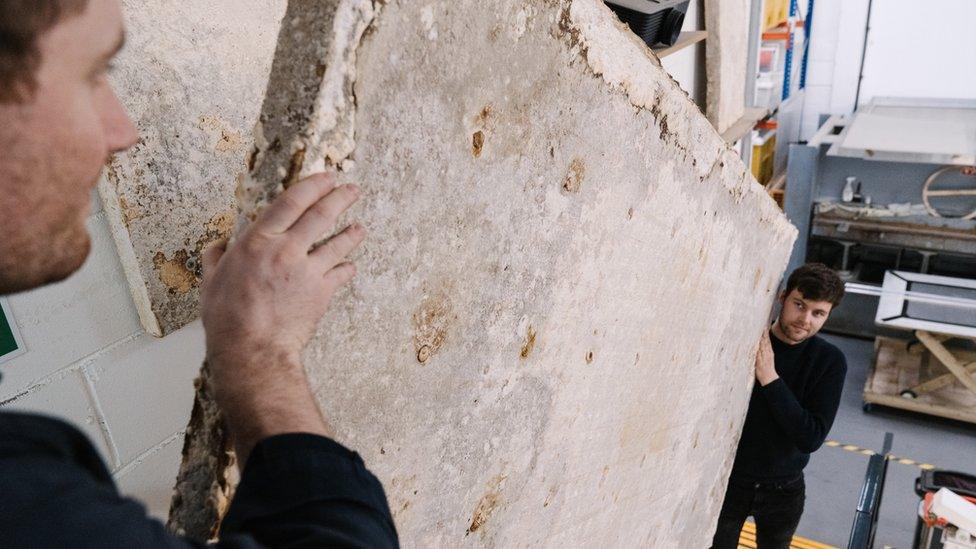
Biohm's insulation panels are made from the root structure of a mushroom
Plastic is a popular product used in many different ways all over the world but plastic pollution has become an increasingly serious problem for our planet, having a long-lasting effect on the world's oceans and wildlife.
Lots of individuals and companies have been coming up with more environmentally friendly alternatives in an attempt reduce the amount of plastic used and better protect the environment.
From mushrooms, fish waste and plant fibres there are lots of unusual things that scientists say can be used instead of plastic.
How are mushrooms being used instead of plastic?
One seemingly unlikely material that businesses have been making use of is called mycelium, which is the root structure of a mushroom.
It's also been used to create an alternative to leather, which is usually made from animals.
Biohm, which is a London-based biomanufacturing company, grows mycelium on a large scale by feeding it things like food waste and sawdust.
It's then used to to create products used in the construction industry such as insulation panels, which are used when building walls, roofs or ceilings, and floors. These panels can be used instead of the more common plastic options.
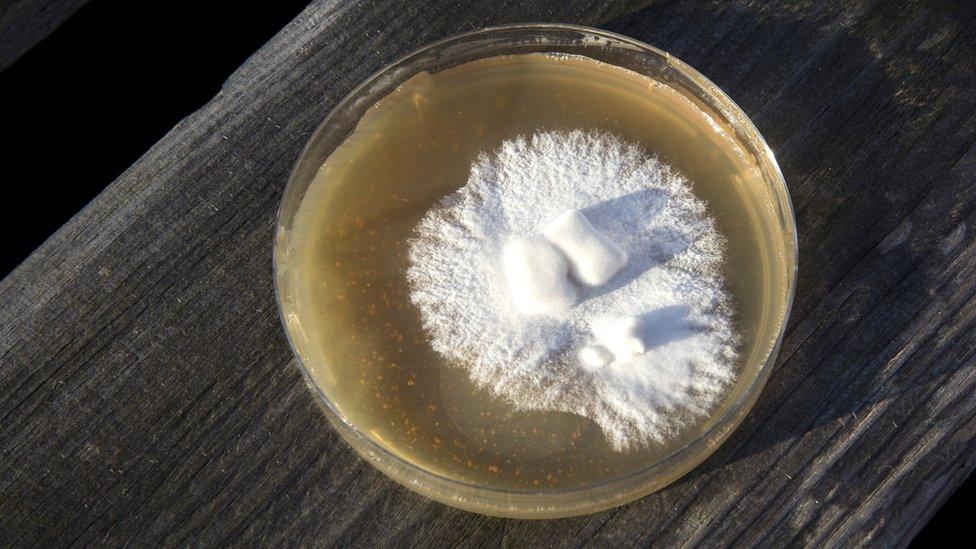
Mycelium, seen here growing in a petri dish, is the root structure of mushrooms
Once the mycelium has grown over a number of weeks, it is harvested and dried, and then squashed into brick-like panels.
"What's beautiful about this product is that the panels can be remanufactured, it can be broken down into feed stock, it's safe to be composted, it's pH neutral and 100% natural. It can fertilise soil," said Oksana Bondar who is the director of design at Biohm.
Mycelium insulation panels are just one of many inventions helping to tackle the world's plastic problem. Check out some other environmentally friendly creations!
Mushroom surfboard

Steve hopes surfboards made from mycelium will one day become the norm
It's not just plastic-free insulation panels mushrooms are helping to make.
A designer from Porthcawl in Wales has also come up with a creative way to use the fungi's root like structure mycelium.
The material is helping Steve Davies develop his own plastic-free surfboard! He uses mycelium which acts as a glue between a natural skeleton structure made of materials like straw that he forms in a mould.
The mycelium roots grow between the skeleton to form a polystyrene-like material that's ideal for shaping a board.
"It sounds a little bit crazy, but it's a way to get away from polystyrene, polyurethane and resin boards that can sit in landfill and not decompose for hundreds to thousands of years," the designer said.
"There's over 400,000 boards made every year," Mr Davies he explained, but large majority of these aren't sustainable.
"Even when it does break down, it can go into fish's ecosystem and bio-accumulate, so it ends up that humans will end up eating this polystyrene plastic", he added.
Fish waste 'plastic'
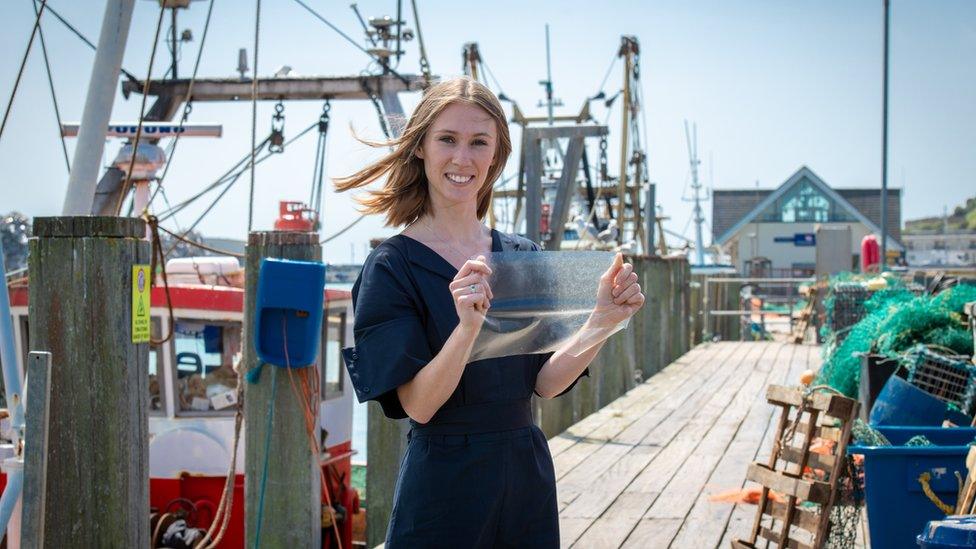
Lucy's creation can be eaten by humans
Have you ever heard of plastic made from fish waste?
Designer Lucy Hughes came up with the idea as an alternative to single-use plastics.
Her project began as an investigation into ways of reducing fish waste, which is a huge global problem.
The product Lucy developed is see-through and strong, which means it could be used for things like sandwich wrappers and bags.
Unlike plastic which can hang around in the environment for hundreds of years, it will break down in home compost or food waste bins within four to six week.
And perhaps the coolest thing about this invention? It's edible!
Plant shoes
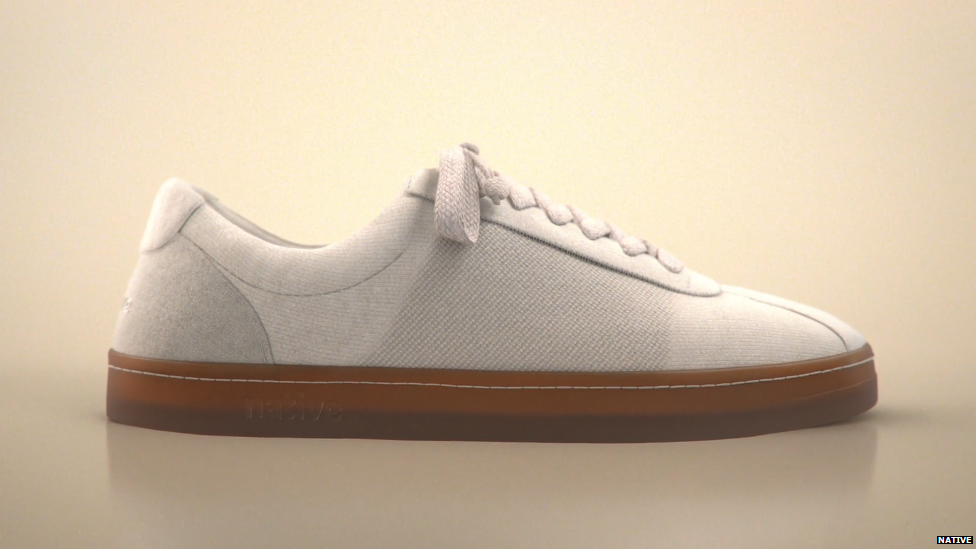
These shoes are 100% biodegradable
Shoes are a huge contributor to waste worldwide, with millions of pairs thrown away each year. Many of these end up in landfills where they're unable to break down as lots of them contain large amounts of plastic.
However, a Canadian shoe company developed the world's first ever 100% compostable, organic trainers a few years ago.
The Plant Shoe is made entirely from plant-based, animal-free materials including pineapple and cotton.
The trainer is completely biodegradable which means when people are done with them, they can be dropped them in the compost and they will break down completely.
There are a number of other shoe companies which also produce biodegradable plastic-free footwear.
Vegan glitter
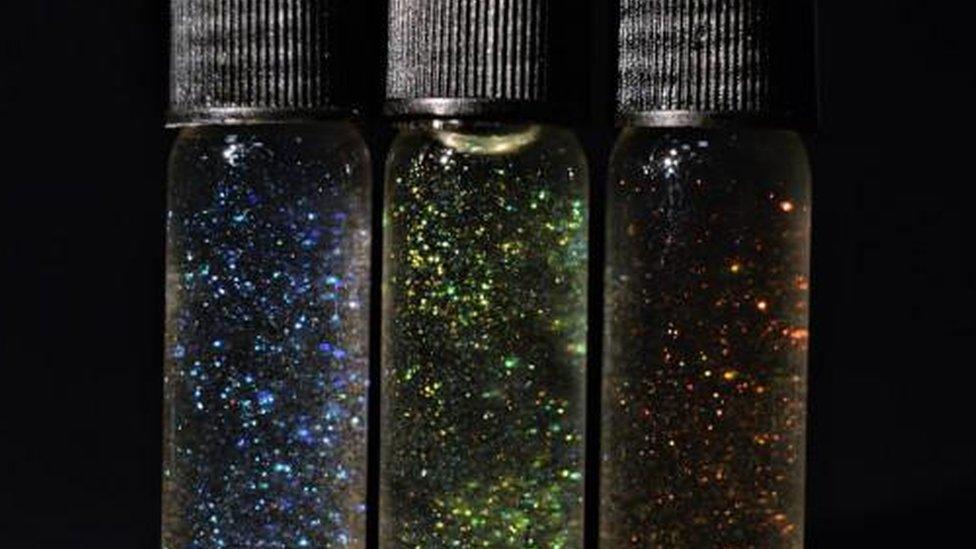
Glitter is a decoration commonly used for things like Christmas cards, and for arts and crafts.
However, despite the joy the material brings to many, its environmental impact isn't so great.
It's because glitter is made from tiny pieces of plastic which don't break down and can end up in the environment, harming wildlife.
However, scientists from the University of Cambridge developed a new plastic-free glitter back in 2021 that is non-toxic, vegan and biodegradable, meaning it will break down in the environment over time.
They used cells from brightly coloured plants and fruits to create the eco-friendly glitter and it still shines brightly with vibrant colours that shouldn't fade like normal glitter.
- Published14 November 2019

- Published17 March 2020
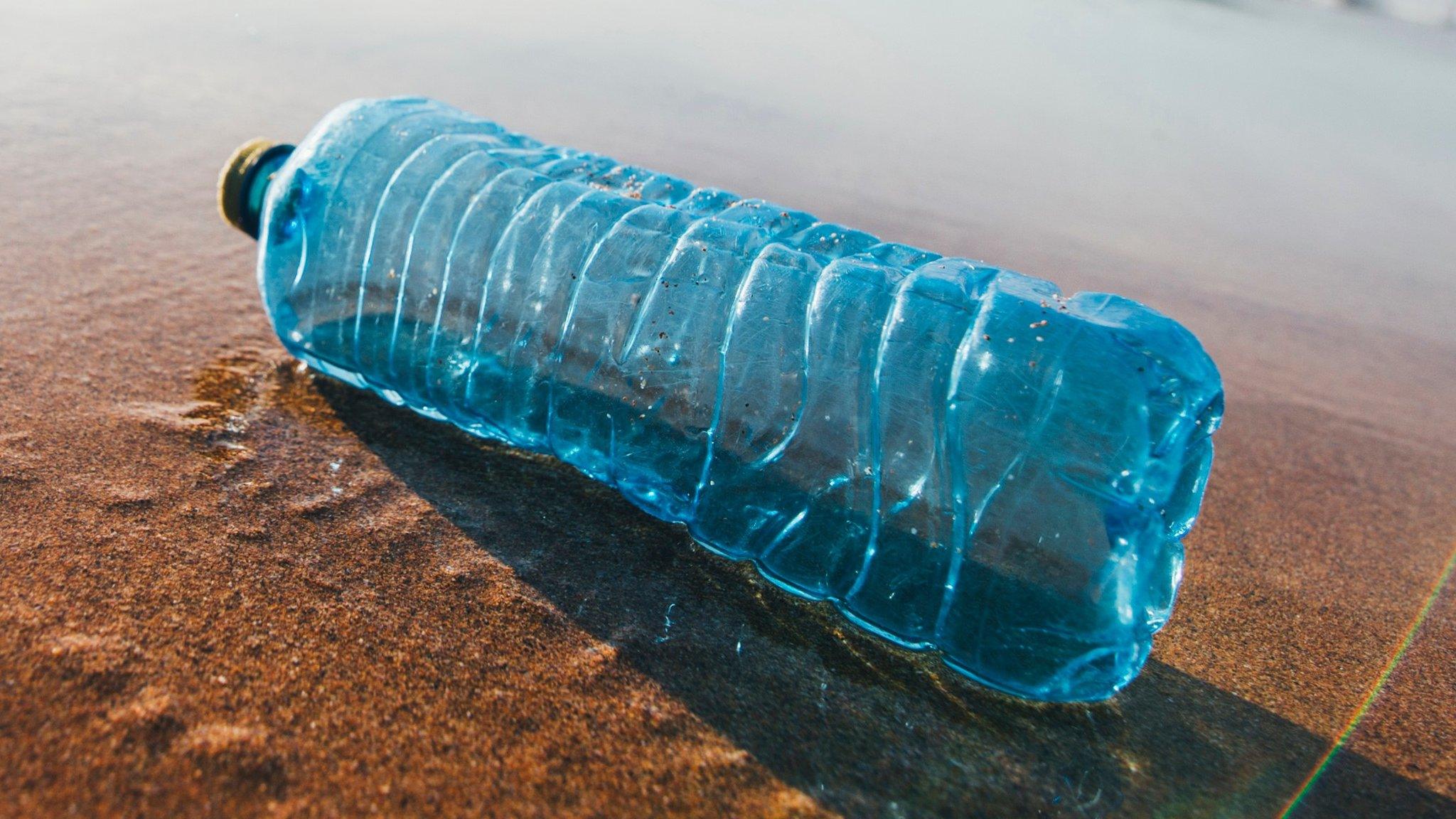
- Published26 April 2018

